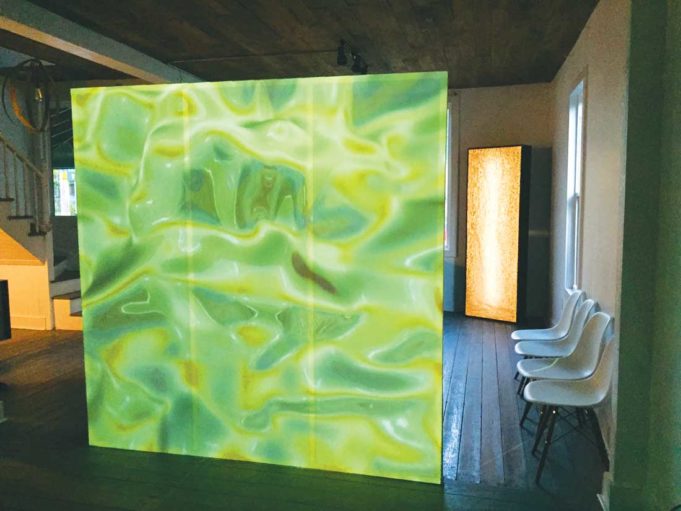Gallery Night in Fort Worth is as close to an art fair as Fort Worth ever gets. Granted, the exhibitions are scattered throughout the city, with opening receptions on one evening only. Fort Works Art’s #28 Grams and the Louis Kahn show at the Kimbell Art Museum were a couple of the big shows that opened to huge crowds a few blocks from each other and made for a typical night of art in Fort Worth.
A few miles east of all of that, across the train tracks just at the edge of downtown, something really cool was happening. With all the galleries closing around 9 and a few parties raging across the city, the Black House opened an exhibition/installation/party that would go on until 2 a.m.
If you were industrious enough to snake around through the North Side to avoid the train blocking the easiest path to the gallery, or if you could read a map and simply drive across Belknap from Artspace 111, you would have been rewarded with the biggest party in Fort Worth that night. I’d had every intention of visiting the space since it opened over a year ago, but somehow I never made it there. And my first attempt, on Gallery Night, was almost thwarted by misreading Google Maps.
The Black House, on East Peach Street, is part music venue, part exhibition/event space, and the fulltime residence of owners Noel and Sara Viramontes. On Gallery Night, Sean P. Miller’s Phased Silhouettes, curated by Fort Worth’s hybrid collective Art Tooth, was on view. Described in the Facebook invitation as a “generative video projection and light sculpture,” it was a strange, transfixing screen projection that shifted, shimmered, and oozed, never quite in the same ways, as the viscous video forms collapsed into one another, creating a moiré effect. The installation was in three parts, with the other two pieces being vertical columns of light, diffused with a scrim-like, sheer material.
Chatting with Miller about his installation went down a tech rabbit hole, but his ideas proved more philosophical than technical. The process and software he used to generate these liquid 3-D forms, Max MSP Jitter, created offset cycles infused with layers of unpredictability. “The idea is that in this type of form and this type of complex dynamic system, I’m seeing a very similar thing in the moiré effect,” he said.
His curiosity about how to describe this effect informed the final look of the installation, delving into waveforms and silhouettes, and recognizing that the audience could have a different experience with the work. “I like the idea that this in some ways goes from being optical and abstract to also incorporating people,” he said. “And having this dynamic of a room, I knew people were going to use it in a way that was maybe different from what I intended, but how do I tie that back in?”
The interactions with the “silhouettes” were a mixture of trance dancing and hypnotic stillness as the horde of post-Gallery Night artists, musicians, and party people moved in and out of the space.
This was hardly just a party, though. It was an installation that resonated at the same rpm as the people there. There have been similar attempts to sustain this kind of energy in the art scene lately. Ben’s Gold Teeth, The Exhibitionist, and other organizations’ shows at the Tilt Room at Shipping and Receiving Bar have tried to strike a balance between art and party. Those well-meaning first salvos into resuscitating post-gallery art in our city have evolved into the more sustained productions from Art Tooth and Fort Works Art. To their credit, both organizations have been putting in a lot of work and garnering the recognition they deserve for making places like Black House possible. If their Gallery Night show is any indication of what’s to come, the Black House could maintain the pulse that it’s generating because they’ve managed to capitalize on their strengths as good business people and are willing to leave the curating to people who know what they’re doing. That’s a hard balance to strike, and they’re off to a good start.
My fantasy for Fort Worth’s twice-yearly Gallery Nights would be a dynamic system of its own, putting aside for one night its comforts and predictability, and engaging a curious and skeptical audience. And for one night, across the tracks in Fort Worth, it came true.
Christopher Blay is an artist who also curates exhibitions for Tarrant County Colleges’ Art Corridor Gallery. He will be a resident artist at the Dallas Museum of Art April-June 2017.












